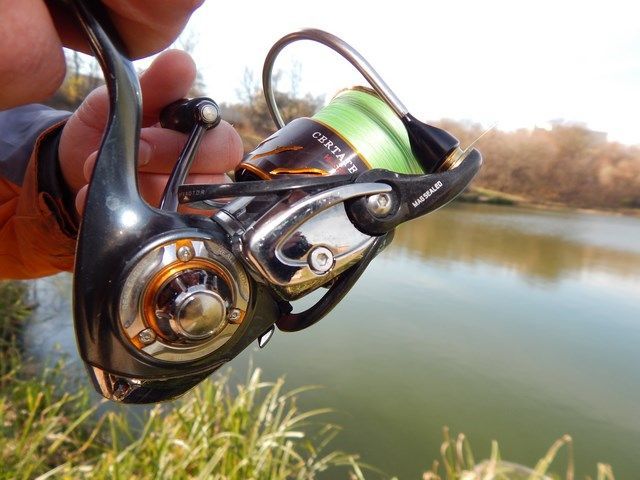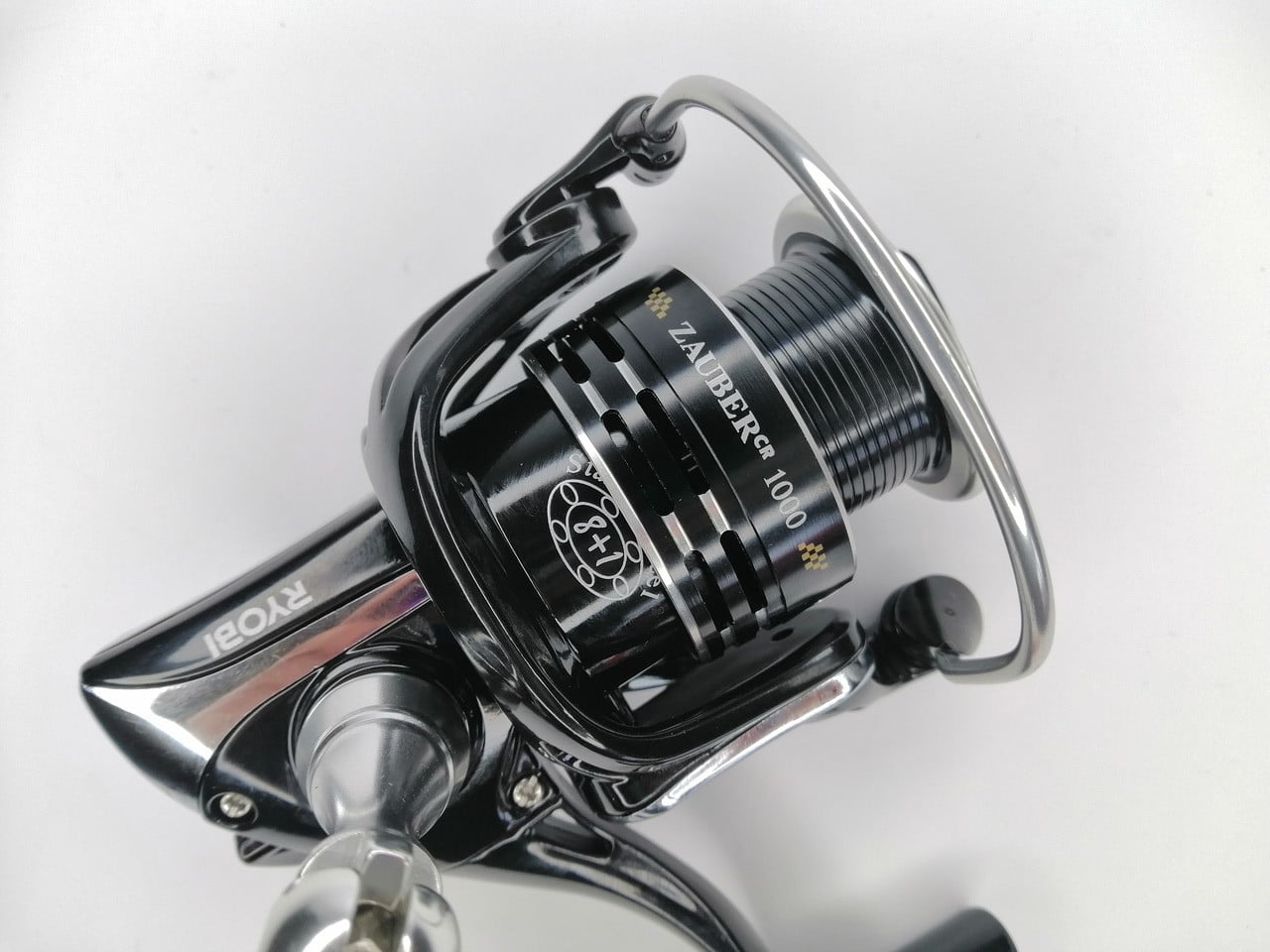An important advantage of a fluorocarbon leash is the ability to resist the teeth of predatory fish, but at the same time remain practically invisible in the water, unlike, for example, Kevlar leash material or strings. Initially, fluor leashes were used by
ultralight and
karpfishers for carp fishing. Over time, the popularity of such leashes has increased, which has led to almost universal use in fishing.
- What is a fluorocarbon leash for?
- Pros and cons of fluorocarbon leashes versus other types of leashes
- Which fluorocarbon to choose for leashes
- Do-it-yourself fluorocarbon leashes – how to knit so that the knot does not open
- Fluor pike leashes
- Perch leashes
- Fluorocarbon ultralight trout leader
- How to make a zander fluor leash
- Errors and their solutions
- Tips
- Поделиться ссылкой:
What is a fluorocarbon leash for?
This leash is made from a material that includes the use of fluorine and carbon. This material combines stealth and rigidity. Such products should be distinguished from leashes consisting of a mono line, which is located inside a fluorocarbon casing. This material is relatively expensive and its use as the main line has not been justified. When stored for a long time, the leash does not deteriorate under the influence of sunlight. This material is heavier than water, allowing for quick immersion.
Pros and cons of fluorocarbon leashes versus other types of leashes
Leader fluorocarbon has approximately the same tensile strength as monofilament. In water, this material practically does not change its properties. The clarity of the leash is determined by how similar the refractive index is to that of water. In fluorocarbon, this characteristic differs slightly, which gives the leash high transparency, in contrast to mono or braid. This allows you not to scare off even the most careful fish when fishing. When comparing the number of fish bites and descents, the first is much higher in fluorocarbon, and the second is significantly lower than in other types of fishing line.
- When fishing, the degree of sensitivity of the material to abrasion is of great importance . This is especially important for winter fishing, when the line is constantly rubbing against the ice. Fluorocarbon provides long-term preservation. Due to this quality, such leashes are insensitive to fish teeth.
- The rigidity of the fluorocarbon wires prevents the tackle from tangling. Mono and braid are less effective in this regard. Even after repeated bites, the line will not lose its shape. The elasticity and rigidity of the leash allows for a good play of the bait.
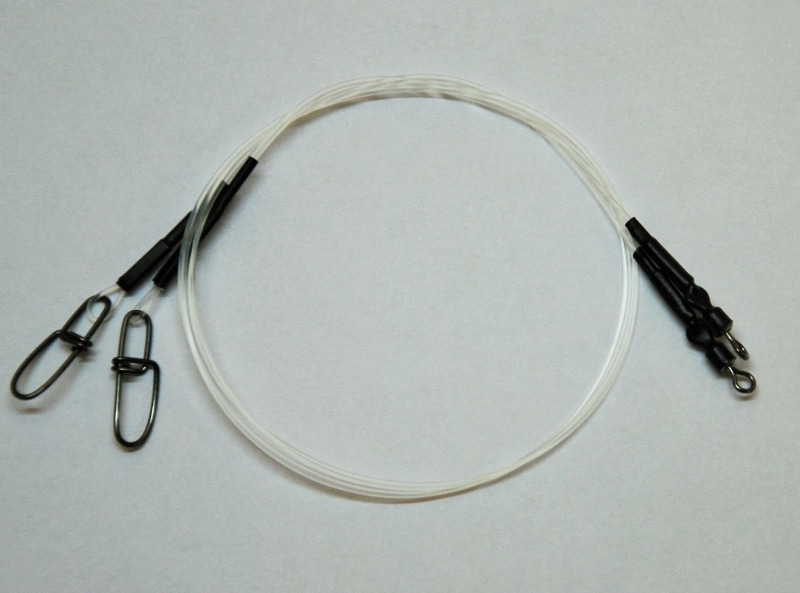
- Fluorocarbon weighs enough to quickly sink to the bottom . Its elasticity will make it easy to take the shape of the surface, making it unobtrusive.
- The material has no memory . After tangling into a beard or tying a knot, the leash made of this material will return to its original form.
- When fishing on the bottom covered with shells or stones with sharp edges, there is no reason to worry about such a leash – it is insensitive to abrasion .
- When stretched, it does not form areas uneven in thickness , which has a positive effect on strength.
- Retains its properties when used at low temperatures . When fishing in winter conditions, it is able to maintain elasticity.
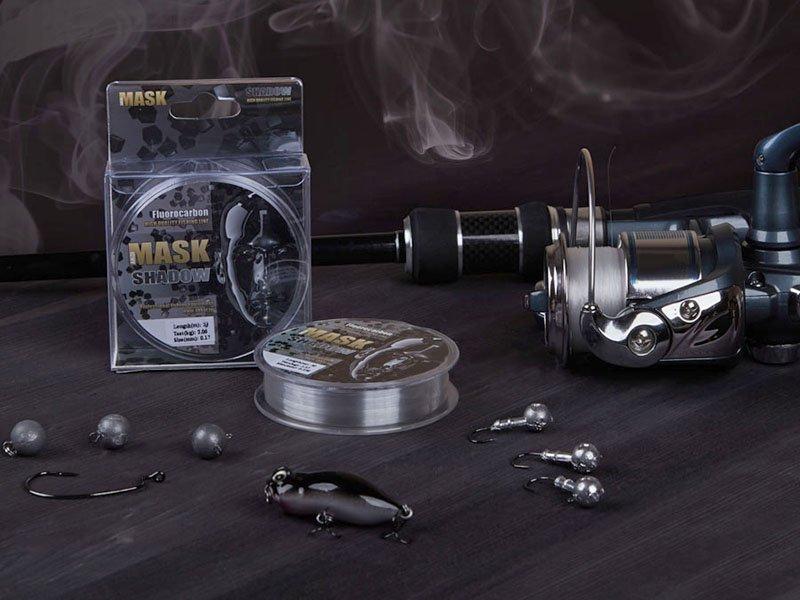
As a disadvantage, the relatively high cost of fluorocarbon leashes is noted. However, it should be borne in mind that it takes a little for leashes, and this reduces the purchase costs.
Which fluorocarbon to choose for leashes
This material can have various properties. It varies in thickness and elasticity. There is a special material for sea water fishing. A fisherman chooses a suitable variety based on what kind of fish he needs to catch. The main producers of fluorocarbon brands are the USA and Japan. You need to understand that quality material produced here will not be sold cheaply. On the market, you can find a cheaper option, which is a nylon thread in a carbon shell, but it does not have the basic properties of fluorocarbon.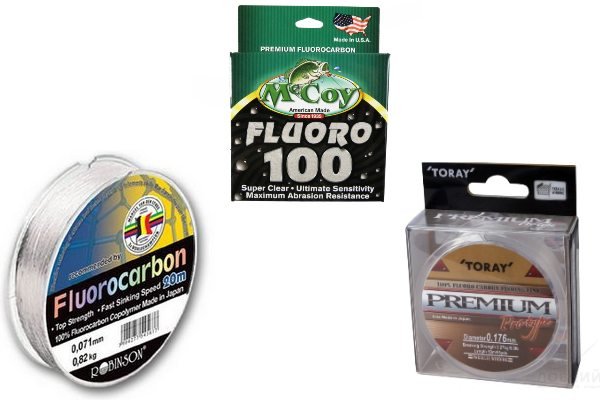
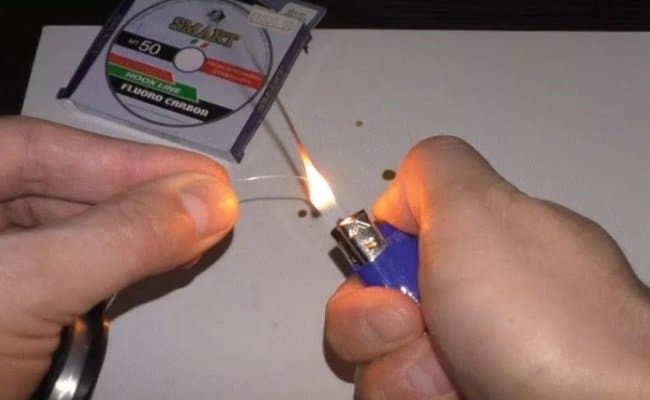

Do-it-yourself fluorocarbon leashes – how to knit so that the knot does not open
For tying such a leash, it is convenient to use
the Carrot knot . It is knitted as follows:
- The ends of the leash and the main line are laid parallel to each other. They are placed in opposite directions.
- The end of the leash is wrapped once around the main line, making a simple knot.
- The tip of the main line is dragged around many times around the future leash. It is enough to do this 6-8 times.
- After that, the tip is wrapped around the resulting structure several more times, moving in the opposite direction.
- The tip is threaded through a simple loop that was previously created on a leash.
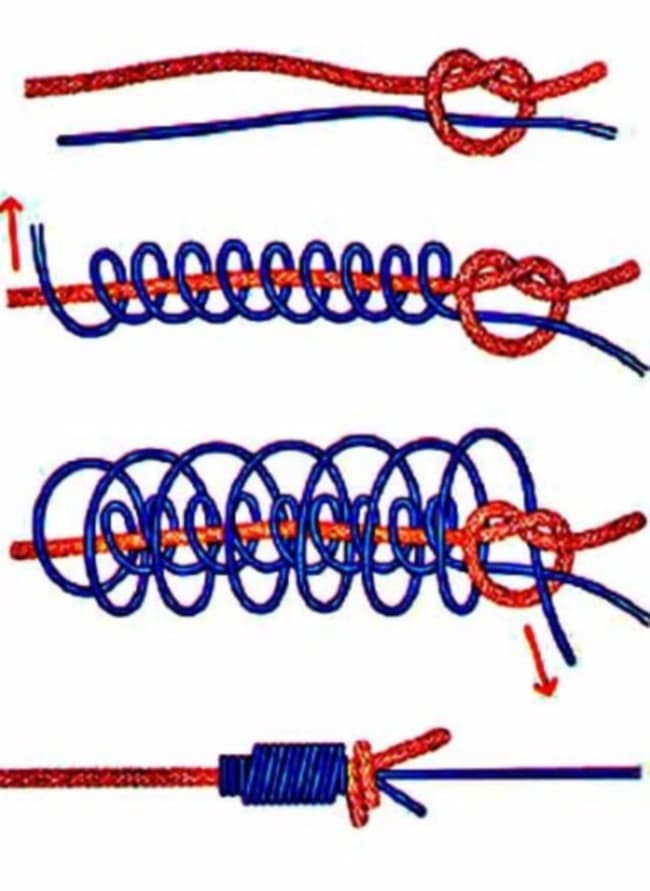
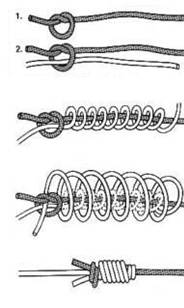
- The tip of the leash is folded in half without tying a knot.
- The mono-line or braid is first threaded inside the fold, then wrapped around the double leash many times, moving in the opposite direction towards the fold.
- Then it is threaded inside the fold.
- Then the knot is tightened.
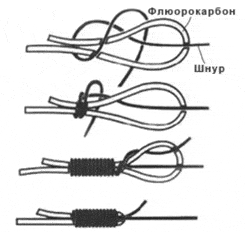
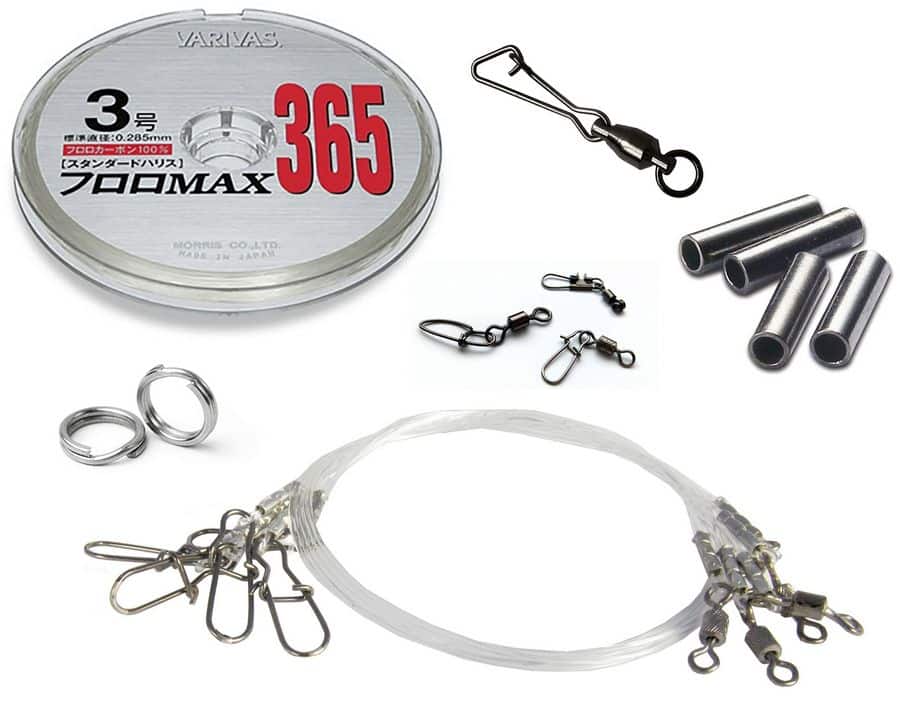
swivel . How to twist a fluorocarbon leash: https://youtu.be/WZCMQsP_jDs
Fluor pike leashes
When fishing for this fish, the use of a fluorocabon leash makes sense in cases where the pike is not active. Otherwise, it is better to use a metal leash. It is usually customary to use 0.3-0.4 mm fluorocarbon. Thicker material can scare fish away. Crimping tubes are used in the installation. A pike fluor lead is often used during
jig fishing . When using
wobblers, the risk of losing expensive bait is too high.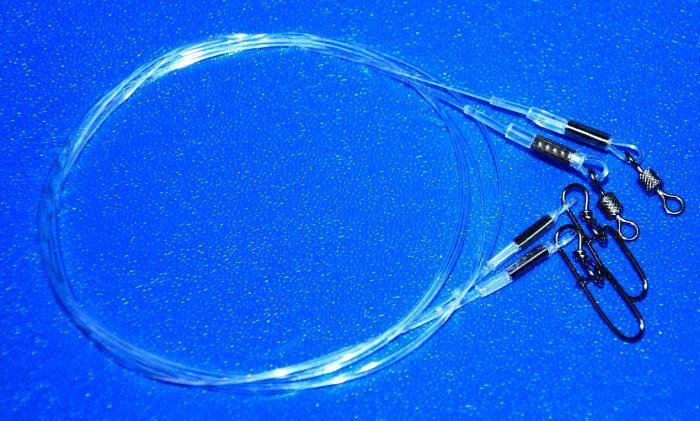
Perch leashes
If you plan to catch small fish, then a thin brand of fluor is better suited for them. In such fishing, a fluor leash with a thickness of 0.1-0.15 mm shows a good result. For large perches, it is better to take a thicker one, 0.18-0.20 mm in diameter.
Fluorocarbon ultralight trout leader
This fish is known for being very wary. She should not see anything in the water that can scare her away. The optimal leash length should be approximately 1 meter. A deviation of 20 cm to one side or the other is allowed. Diameter no more than 0.2.
How to make a zander fluor leash
This fish has significant dimensions. For fishing, you should take leashes with a cross section of 0.23-0.30 mm. Zander has strong teeth, so using a fluorocarbon leash will be an effective solution.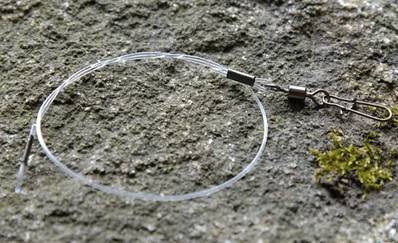
Errors and their solutions
Before fishing, check the leash for cracks and irregularities. If they are available, then you need to take another copy. Tightening the knot without wetting when tying can result in a loss of strength. In this case, the attachment point will become a weak point when fishing. The stiffness of the material makes it difficult to create knots. It can cause the material to break if the fisherman uses excessive force when tying.
How to tie a fryorocarbon leash – making leashes from fluor, video instruction:
https://youtu.be/4fi2BkF-9RM
Tips
When choosing a leash, you must take into account its maximum permissible breaking load. It must correspond to the weight of the intended prey. When fishing in the spring, you need to take into account that at this time the fish begins to eat. Therefore, you need to choose a leash that is more durable than in other seasons. For spring fishing, leashes of 25-30 cm are used, for winter fishing, up to 20 cm, in summer they use no more than 15 cm. Longer ones are usually used for
branch leads .
